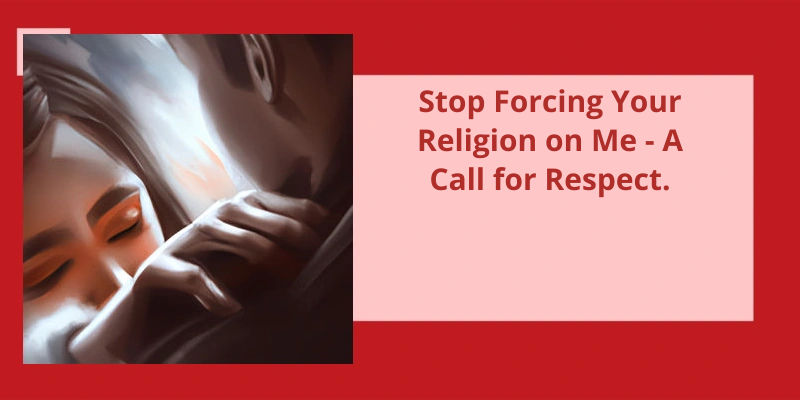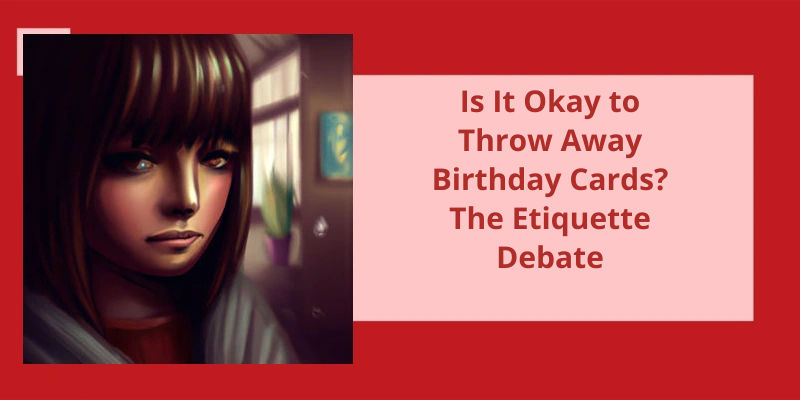The art of hosting a dinner party has always been characterized by etiquettes and traditions that have been passed down from generation to generation. One of the most crucial aspects of hosting a dinner party is the seating arrangement, indicating the social hierarchy and providing a conducive environment for meaningful conversations. Typically, the host and hostess are placed at the head and foot of the table, respectively. However, with time, this tradition has undergone significant changes, and the choice of seating arrangement may depend on various factors, such as the formality of the occasion, the size of the guest list, and the host's preferences. With the emergence of modern trends in dining etiquette, it’s fascinating to explore who sits at the foot of the table and the implications of this arrangement on social interactions.
How Is a Family Supposed to Sit at Dinner Table?
Instead, family members can sit next to each other to encourage conversation and promote a sense of togetherness. Children can be seated next to their parents or at a designated childrens table, depending on the size of the family and the table. It’s important to ensure that everyone has enough space to be comfortable and that plates and utensils are easily accessible.
In terms of table settings, each place setting should include a dinner plate, salad plate, bowl, water glass, wine glass (if applicable), and cutlery. Napkins can be placed either on the plate or to the side. It’s important to avoid cluttering the table with too many decorations or unnecessary utensils as they may interfere with the meal.
During the meal, it’s important to engage in conversation and actively listen to each other. Electronic devices should be put away to minimize distractions and encourage meaningful interactions. It’s also important to avoid rushing through the meal in order to allow time for enjoying the food and each others company.
At the end of the meal, guests should wait until everyone has finished eating before getting up from the table. It’s also considered polite to offer to help clear the table and wash dishes, especially if you’re a guest in someone elses home. Thanking the hosts and expressing gratitude for the meal is also a nice way to show appreciation.
Overall, the key to sitting at a family dinner table is to prioritize communication and connection. By being mindful of seating arrangements and table settings, engaging in conversation, and showing gratitude, families can create a warm and welcoming atmosphere that promotes togetherness and strengthens relationships.
Now that we’ve addressed the question of where the head of the table is located, let’s delve deeper into the significance of this position and how it impacts the dynamics of a dinner party or other formal gathering.
What Is the Meaning of Head of the Table?
The head of the table is traditionally considered the most honored seat, as it’s closest to the fireplace in a medieval hall, which was the warmest spot in the room. The position also provided the best vantage point for overseeing the feast and guests. In modern times, the head of the table is typically located at the end of the table, farthest from the entrance and closest to any potential focal point (such as a television or fireplace). It’s also typically the seat with the most armrests, which suggests it’s importance.
The head of the table can also be chosen for political or hierarchical reasons. For example, in a board room or business meeting, the head of the table is often occupied by the CEO or president, who chairs the meeting and sets the agenda. In a family gathering, the head of the table may be occupied by the oldest or most respected member of the family. The location of the head of the table can have significant social and psychological impact, affecting power dynamics, communication styles, and group cohesion.
In some cultures, the head of the table is considered a place of honor and respect. For instance, in Chinese culture, the head of the table is typically reserved for the guest of honor or for the most senior member of the family. In South Indian culture, the head of the table is often reserved for the patriarch or matriarch of the family, and in some Muslim communities, it’s reserved for the eldest male family member. These traditions often emphasize the importance of hierarchy and respect for elders.
The head of the table can also have symbolic meaning. In religious contexts, the head of the table may represent Jesus, who was traditionally depicted as sitting at the head of the Last Supper. In political or diplomatic contexts, the head of the table may represent the national leader or the person hosting the meeting. In both cases, the location of the head of the table can communicate a message about power and authority.
Source: Miss Manners: Identifying the head of the table
Being seated at the head of the table is a symbol of status and honor, often reserved for the most important guests during a formal meal. This position is typically held by leaders and dignitaries, and it signifies their elevated standing within the company or community. However, the meaning of being at the head of the table can vary depending on the cultural context and the occasion. Let’s delve deeper into this tradition and explore what it means to occupy this prestigious position.
What Does It Mean to Be at the Head of the Table?
Being at the head of the table is a position of leadership and authority. It signifies that the person sitting in that seat is the most important person in the room, and commands respect and attention from those around them. This is especially true in the context of a formal meal, where the head table is typically reserved for the mayor and other dignitaries.
At the head of the table, one is expected to be a gracious host or hostess, welcoming guests and extending hospitality. This includes making introductions, initiating conversation, and ensuring that everyone is comfortable and well-fed. The person at the head of the table is also responsible for setting the tone of the meal, and for making sure that everyone is included and engaged in the conversation.
However, being at the head of the table isn’t just about power and privilege. It’s also a position of responsibility, and requires a certain level of tact and diplomacy. The person at the head of the table must be able to navigate complex social dynamics, and to foster a sense of harmony and cooperation among all those present.
When it comes to hosting a dinner party or a formal event, there are many little details that can affect the comfort and enjoyment of your guests. One of these details is where to seat guests at the end of the table. While it may seem like a small matter, the right seating arrangement can make a big difference in the overall atmosphere of the event. In this article, we’ll explore different options and considerations for seating guests at the end of the table, with a particular focus on accommodating left-handed guests.
Who to Seat the End of a Table?
When it comes to seating guests at the end of a table, there are certain considerations to keep in mind. One of the most important is the comfort and convenience of your guests. If you’ve a mix of left- and right-handed guests, it can be tricky to seat them in a way that avoids awkward bumping and jostling during the meal. To make things easier, it’s generally best to seat left-handed guests at the end of the table.
By doing this, you can help ensure that everyone has a comfortable and enjoyable dining experience. Left-handed guests won’t have to worry about bumping elbows with their right-handed counterparts, which can be especially important if the meal involves a lot of passing dishes and serving plates.
Some may prefer to sit in the middle or even on the right side, so it’s always a good idea to ask guests about their seating preferences ahead of time. Additionally, some cultures or social traditions may dictate specific seating arrangements that may take precedence over individual preferences.
Take the time to think about the needs and preferences of each guest, and try to accommodate them as best you can. By doing so, you can help ensure that everyone has a wonderful time at your dinner party or event, and that your guests feel valued and appreciated. So next time youre planning a gathering, be sure to think carefully about how you seat your guests – it could make all the difference in the world!
How to Seat Guests for a Business Meeting: Tips and Best Practices
- Consider the purpose of the meeting and your guest list when determining seating arrangements.
- Place the most important guests at the head of the table, such as the guest of honor or highest-ranking attendees.
- Seat guests strategically based on their connection to one another or shared business interests to encourage conversation.
- Ensure all guests have a clear view of the speaker or presentation area.
- Provide name cards or place cards to avoid confusion and help guests find their seats.
- Avoid seating guests directly across from one another to prevent awkward silences or tension.
- Consider the comfort of your guests by providing adequate space between seats and keeping the room at a comfortable temperature.
- Be flexible and willing to make changes to seating arrangements if necessary to accommodate any last-minute changes or requests.
The seating arrangements at a wedding can be a tricky affair, but none more so than deciding who gets the honor of sitting at the top table. It can often lead to hurt feelings and unnecessary drama, but with careful consideration, it can be a memorable and enjoyable experience for everyone involved. So, let’s delve deeper into the world of wedding etiquette and discover who’s meant to sit at the top table.
Who Is Meant to Sit at the Top Table?
The top table is traditionally placed at the head of the reception hall, and often elevated above the other tables. It serves as a focal point for the festivities, and is a symbol of the status and prestige of those who sit there. But who exactly should be sitting at the top table, and how should they be arranged?
The most important people to include at the top table are the bride and groom themselves. This is their special day, and they should be the center of attention. Next, it’s customary to include the parents of both the bride and the groom. This is a way of honoring and thanking them for their support and guidance throughout the wedding planning process.
The arrangement of the top table is also important. Traditionally, the bride and groom sit in the middle, with the bride at the grooms right hand side. The parents sit to the right and left of the couple, with the mother of the bride next to the bride and the father of the groom next to the groom.
It’s a symbol of the love and support that they’ve received throughout their lives, and a way to show gratitude and appreciation for the people who’ve helped make their wedding day a success. By carefully considering who to include and how to arrange them, couples can create a top table that’s both meaningful and beautiful, and a reflection of the love and joy that they share with their family and friends.
Should the Bridal Party Sit at the Top Table? If So, Where Should They Be Placed?
This topic raises the question of whether the bridal party should sit at the top table and, if so, where they should be placed.
Etiquette and social norms have always played an essential role in social gatherings and events. One of the most important aspects of proper etiquette is how to seat a woman at a table. While this may seem like a simple task, there are some important rules to follow to ensure that everyone feels comfortable and respected. Let’s take a look at the proper way to seat a woman at a table.
How Do You Seat a Woman on a Table?
It’s important for the man to be aware of the surroundings and take note of any cultural differences in seating protocols. For example, in Japan, it’s customary for the most senior person to be seated furthest from the door. Also, the host should always be seated last to ensure everyone is settled and comfortable before beginning the meal or discussion.
Body language and tone of voice are important in the execution of this chivalrous act. The man should approach the table with confidence, making eye contact with his partner and the other guests. He should speak in a relaxed and courteous manner, offering his arm to his partner if she wishes to be escorted to her seat.
It’s also important to consider the physical attributes of the table and chairs. If the table is too high or the chairs too low, the man should help his partner to her seat. It’s also important to ensure that the chair is stable and won’t tip over when the woman sits down.
If the man is unsure of where to seat his partner, he should simply ask her preference. Some women may prefer to be seated closest to the host or the view, while others may have a physical preference for a certain type of chair or seating arrangement.
It’s less about the actual act of seating a woman at the table and more about the gesture of kindness and respect. It’s a small way to show appreciation and make a woman feel valued and cared for in a social setting. By following these simple guidelines, a man can ensure that his partner and other female guests feel comfortable and at ease, setting the tone for a pleasant and enjoyable evening.
Conclusion
In summary, the dynamics of seating arrangements at the dining table have evolved over time, with the traditional positioning of the host and hostess at the head and foot of the table losing it’s significance. With more emphasis on socializing and the creation of a convivial atmosphere, hosts now have the flexibility to choose seating arrangements that best suit their social interactions. Whether it's at the head, the middle or foot of the table, what matters most is that everyone has a great time and enjoys the company of their dining partners. Ultimately, the seating arrangement is just one aspect of dining etiquette and shouldn’t detract from the overarching goal of building relationships and creating lasting memories.






